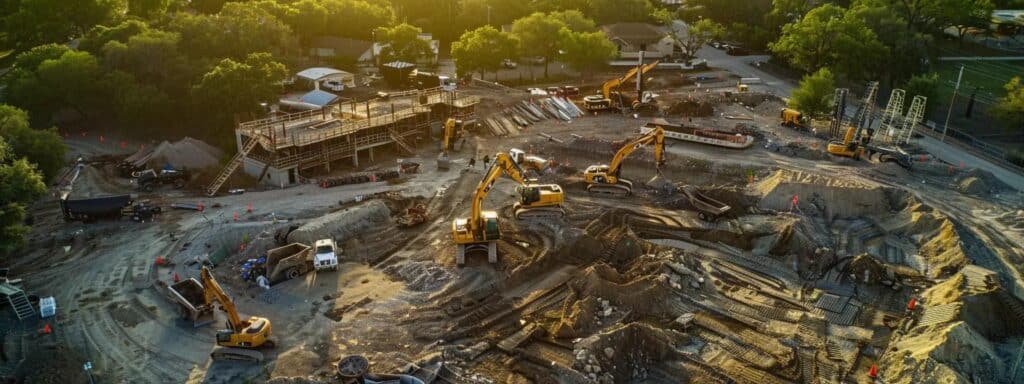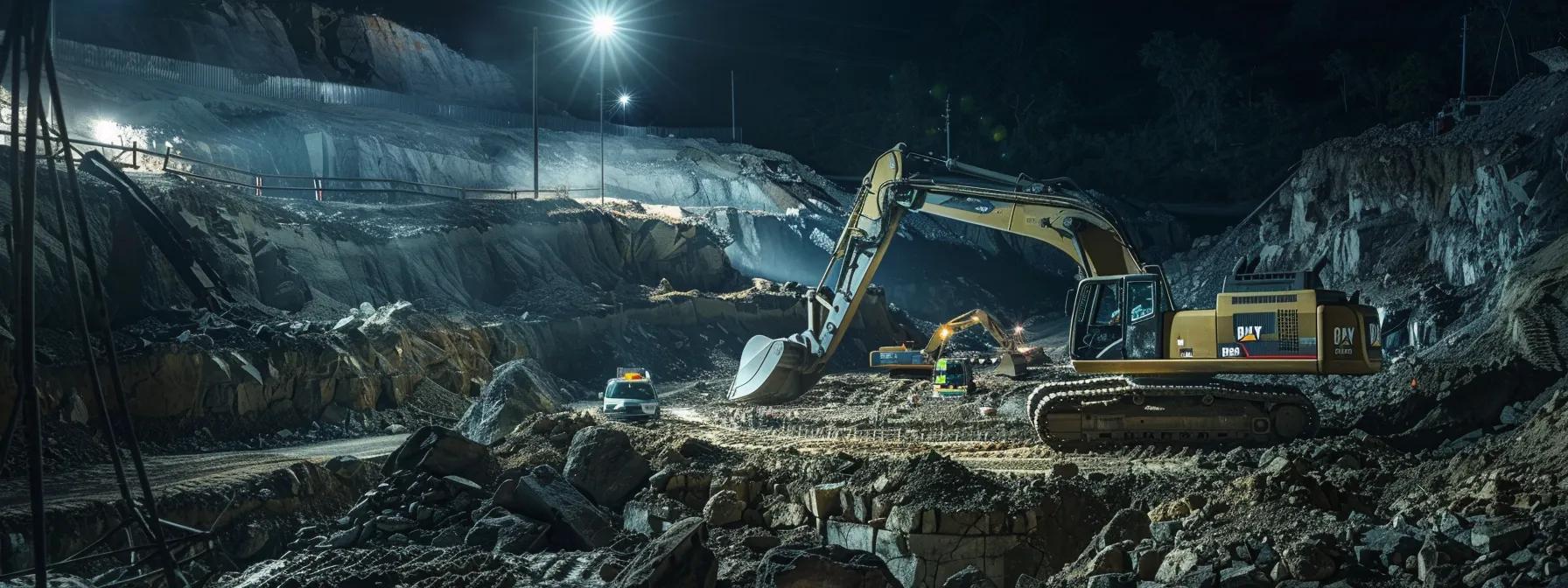Expert Guidance on Excavation Services in Wimberley Texas
Introducing excavation services in Wimberley, Texas, requires a robust understanding of local regulations, equipment needs, and safety measures. Property owners and general contractors such as general contractor near me must navigate zoning laws, permits, and environmental considerations to protect both the property and the community. This article outlines best practices for excavation services by discussing regulatory compliance, equipment selection, safety protocols, client communication, process optimization, and post-excavation responsibilities. The discussion is tailored for Wimberley, Texas, where local factors such as terrain type, construction laws, and community expectations play significant roles.
Best Practices for Excavation Services in Wimberley Texas
The purpose of this guide is to offer clear, actionable advice for homeowners and developers, including insights from general contractor near me. We detail key regulations, proper machinery selection, and strategies that meet OSHA guidelines while emphasizing consistent communication—with generalcontractornearme.contractors—and proper planning to avoid delays and build trust. By following these practices, excavation services can achieve regulatory compliance, operational excellence, and higher client satisfaction.
Transitioning into the main sections, the following guidelines provide a pathway from initial planning and regulatory research to final site restoration and client follow-up.
Understand Local Regulations for Excavation Services in Wimberley Texas
Understanding local regulations is critical for successful excavation projects in Wimberley. Contractors, such as general contractor near me, should begin by researching zoning laws which dictate where and how excavations may occur. These laws help prevent disputes and penalties by ensuring work does not conflict with residential, commercial, or mixed-use zones.
Research Zoning Laws for Excavation in Wimberley Area
Local authorities in Wimberley set clear rules on building setbacks, depth restrictions, and land use planning, often coordinating with general contractor near me to ensure compliance. Reviewing municipal codes and consulting with planning departments ensures that projects adhere to these requirements and preserve the local aesthetic and property values.
Obtain Necessary Permits for Excavation Work
Before starting excavation, obtaining the proper permits is essential. In collaboration with local contractors, permits ensure that work is inspected and meets safety and environmental standards. This often involves submitting project plans, environmental impact assessments, and structural details. In historic or sensitive areas, additional documentation may be required.
Ensure Compliance With Environmental Regulations
Environmental guidelines in Wimberley address stormwater management, soil erosion prevention, and safe handling of hazardous materials. Contractors must follow local and federal regulations, such as the Clean Water Act, and apply measures like sediment control and proper waste disposal to protect ecosystems and water quality.
Check for Existing Utility Lines Before Starting Excavation
A thorough check for utility lines is vital before beginning work. Contractors should contact utility companies to mark underground cables, water pipes, and gas lines. This precaution minimizes the risk of accidents and costly repairs and is a standard practice in Wimberley.
Review Safety Regulations Specific to Construction Sites
Contractors are required to adhere to OSHA safety standards, which include using personal protective equipment (PPE), clear signage, and emergency shutdown protocols. Regular safety training and on-site inspections help maintain a secure work environment and minimize accidents.
Choose the Right Equipment for Excavation Projects in Wimberley

Selecting the right equipment is crucial to project efficiency, safety, and cost-effectiveness. Equipment must match the project’s scale, terrain, and specific objectives. In Wimberley, contractors evaluate multiple factors to ensure machinery and attachments meet both project requirements and established safety standards.
Assess Project Size to Determine Equipment Needs
The size of the project influences machinery selection. Small residential projects may use compact backhoes or mini excavators, while larger commercial projects may require bulldozers, hydraulic excavators, or cranes. A thorough site assessment helps determine the appropriate scale and potential for future expansion.
Evaluate Terrain Types for Optimal Machinery Selection
Wimberley’s varied landscapes—from rugged hills to rocky soils—demand careful machinery selection. Some excavators are specifically designed for uneven or unstable ground. Matching equipment capabilities with terrain characteristics improves efficiency, reduces wear, and ensures safer operations.
Consider Efficiency and Fuel Consumption of Equipment
Newer equipment models often incorporate energy-saving technologies and improved hydraulic systems. Reduced fuel consumption not only lowers operational costs but also speeds up project completion. Contractors should evaluate these metrics when selecting equipment for cost-effective operation.
Keep Equipment Well-Maintained for Safety and Performance
Regular maintenance is key to ensuring optimal equipment performance and worker safety. Scheduled servicing, timely repairs, and pre-project inspections help prevent breakdowns. A well-maintained fleet extends machinery life and keeps operations running smoothly.
Hire or Rent Specialized Machinery as Needed
Depending on a project’s duration and complexity, contractors may choose to hire, rent, or purchase specialized machinery. Renting may be more cost-effective for one-off projects, while long-term projects could justify the purchase of a diversified fleet. Evaluating the total cost of ownership is critical in making this decision.
Implement Safety Protocols for Excavation Work in Wimberley
Implementing robust safety protocols is essential to mitigating risks and maintaining productivity. Given the inherent hazards of excavation, contractors in Wimberley must ensure that every worker is properly trained and equipped to handle emergencies.
Conduct Thorough Site Assessments Before Starting Work
Before excavation begins, comprehensive site assessments help identify risks such as unstable soil, underground obstructions, or challenging geographical features. This evaluation allows for the implementation of protective measures and a safer work environment.
Utilize Proper Personal Protective Equipment for Workers
Ensuring that all workers wear the correct PPE—such as hard hats, high-visibility clothing, steel-toed boots, and safety goggles—is non-negotiable. Regular PPE checks and replacements are essential for maintaining safety and complying with OSHA standards.
Train Employees on Excavation Site Safety Measures
Continuous training covering machine operation, emergency procedures, and environmental hazards is crucial. Regular safety sessions help employees recognize potential issues and respond promptly, which is key to a productive and secure work site.
Establish Emergency Response Plans for Job Sites
A clear emergency response plan is critical. This plan should cover evacuation routes, first-aid procedures, and communication protocols during crises. Regularly rehearsed drills ensure that all crew members are prepared to act swiftly in an emergency.
Monitor Weather Conditions to Anticipate Hazards
Weather can significantly impact excavation safety. Contractors should monitor forecasts for heavy rain, high winds, or extreme temperatures and adjust work schedules accordingly. Proactive weather monitoring helps prevent accidents and protects workers and equipment.
Communicate Effectively With Clients Throughout Excavation

Clear communication with clients is essential for project success. Regular updates help set realistic expectations, prevent disputes, and foster a strong client-contractor relationship.
Discuss Project Timelines and Expectations With Clients
At the outset, discussing timelines and deliverables ensures that clients understand each project phase. Detailed breakdowns help manage expectations and facilitate proactive collaboration, which can resolve potential delays before they escalate.
Provide Regular Updates on Excavation Progress
Clients benefit from frequent progress updates through reports, phone calls, or on-site meetings. Keeping clients informed minimizes uncertainty and reinforces their confidence in the expertise of the contractors.
Address Client Questions and Concerns Promptly
Prompt responses to client queries regarding changes or unexpected issues are key. Detailed explanations help resolve concerns quickly and demonstrate the contractor’s commitment to project success.
Deliver Clear Explanations of Any Unforeseen Issues
In cases of unexpected issues, such as encountering hidden utilities or unusual soil conditions, providing straightforward and clear explanations reassures clients. Transparency about potential timeline changes or additional costs reinforces professionalism and trust.
Gather Feedback Upon Project Completion for Future Improvement
After completing the project, obtaining client feedback through surveys or follow-up meetings is vital. This feedback helps identify areas for improvement and can yield positive testimonials that further enhance the service’s reputation.
Optimize Excavation Processes for Efficiency and Cost-Effectiveness
Optimizing excavation processes improves both efficiency and cost-effectiveness. Contractors in Wimberley should focus on streamlining workflows, reducing downtime, and controlling costs without compromising safety or quality.
Plan Project Phases to Streamline Workflow
Dividing the project into clearly defined phases—from initial site assessment to final restoration—improves coordination and minimizes downtime. Detailed planning ensures that each phase is executed in a logical sequence with proper resource allocation.
Implement Technology for Project Management and Tracking
Modern project management tools enable real-time updates, resource tracking, and data analysis. These digital tools improve accuracy and allow for remote monitoring, ultimately aiding in proactive, data-driven decision-making.
Reassess Project Plans to Minimize Unnecessary Expenses
Regularly reviewing project plans helps identify opportunities to reduce costs. Evaluating equipment usage, labor, and material consumption compared to past data can reveal ways to cut waste without compromising outcomes.
Use Eco-Friendly Practices to Reduce Waste
Adopting eco-friendly methods—such as recycling demolition debris, using energy-efficient machinery, and conserving water—lowers project costs and demonstrates a commitment to sustainability. These practices also help secure community support and regulatory approvals.
Maintain Open Lines of Communication With Suppliers
Effective supplier communication ensures timely delivery of materials and equipment at competitive prices. Strong relationships with suppliers reduce delays and may result in cost savings through volume discounts or special pricing.
Evaluate Post-Excavation Responsibilities in Wimberley Texas

Post-excavation responsibilities extend beyond digging. Contractors must restore the site to its intended condition and manage any environmental impacts. Proper post-excavation practices enhance community safety and client satisfaction.
Restore Sites to Their Original Condition After Excavation
Restoration involves regrading, landscaping, and any necessary repairs to prepare the site for its next phase, whether construction or final landscaping. A properly restored site minimizes future maintenance issues and maintains property integrity.
Dispose of Debris and Materials Responsibly
Properly disposing of demolition debris and hazardous materials is essential for environmental protection and regulatory compliance. Contractors should separate, recycle, and dispose of materials according to local waste management guidelines.
Assess the Impact of Excavation on the Surrounding Area
A post-project assessment of drainage, soil stability, and aesthetics helps identify any issues requiring remediation. Detailed reports ensure local authorities and clients remain confident in the project’s outcomes.
Follow Up With Clients to Ensure Satisfaction
Following up with clients after project completion verifies that the site meets their expectations and that any concerns are addressed. This practice not only enhances client satisfaction but also builds long-term relationships and repeat business.
Document Lessons Learned for Future Excavation Projects
Recording challenges, solutions, and feedback upon completion helps refine future processes. This documentation enables contractors to standardize protocols, improving efficiency and safety on subsequent projects.
Frequently Asked Questions
Q: How do local zoning laws affect excavation projects in Wimberley, Texas? A: Local zoning laws determine where and how excavation work can occur, including building setbacks and depth restrictions. Contractors must review these regulations to ensure compliance and avoid legal issues, often consulting local planning departments for clarity.
Q: What permits are typically required before starting an excavation project? A: Excavation generally requires building and environmental permits. Detailed project plans, environmental impact assessments, and utility-check documents are common requirements that protect both contractors and property owners by ensuring work meets safety standards.
Q: How can contractors ensure safety during excavation work? A: Ensuring safety involves comprehensive site assessments, the use of proper personal protective equipment, regular training sessions, established emergency response plans, and continuous monitoring of weather conditions to mitigate risks.
Q: What role does equipment maintenance play in excavation projects? A: Regular maintenance, including preventative servicing and scheduled inspections, is essential to prevent breakdowns and reduce the risk of accidents. This practice enhances operational efficiency and safeguards worker safety.
Q: How do eco-friendly practices benefit excavation projects? A: Eco-friendly practices help reduce waste and lower operational costs. Recycling materials, using energy-efficient machinery, and conserving water improve overall efficiency while meeting regulatory standards and demonstrating environmental responsibility.
Q: Why is supplier communication important in excavation projects? A: Effective communication with suppliers ensures timely delivery of materials and equipment. This reliability helps maintain a smooth supply chain, reduces waiting periods, and secures cost-effective pricing agreements critical to project efficiency.
Q: How is post-excavation site restoration managed? A: Site restoration involves regrading, landscaping, and ensuring proper drainage. Contractors must follow local guidelines to return the site to its original condition, preventing long-term issues and enhancing property value.
List of Recommended Equipment for Wimberley Excavation Projects
Below is a table summarizing essential machinery used in excavation projects, along with their key features and benefits.
| Equipment | Key Feature | Benefit | Typical Use Case |
|---|---|---|---|
| Mini Excavator | Compact design | Ideal for residential sites | Small-scale excavations and landscaping |
| Hydraulic Excavator | Powerful hydraulic system | Efficient digging in hard soils | Commercial excavation and large projects |
| Bulldozer | Heavy pushing capacity | Grading and leveling work | Site clearing and foundation preparation |
| Backhoe Loader | Versatile bucket options | Dual functionality for digging and loading | Urban projects and maintenance work |
| Trenching Machine | Precision digging ability | Creates uniform trenches | Utility line installation |
| Crane | High load capacity | Lifting heavy materials | Construction support and material handling |
Prior to starting work, contractors should review this table to select machinery that best meets project requirements considering efficiency, terrain, and overall conditions.
Top 5 Safety Procedures for Excavation Sites in Wimberley
- Conduct Site Assessments Thoroughly – Identify potential hazards through detailed on-site evaluations to prevent accidents.
- Provide Appropriate PPE – Equip all workers with helmets, gloves, boots, and high-visibility clothing to reduce injury risks.
- Implement Regular Training – Hold frequent training sessions on machinery operation, emergency procedures, and excavation practices.
- Develop Emergency Response Plans – Establish and rehearse clear protocols covering evacuations, first-aid, and communication during emergencies.
- Monitor Weather Conditions – Regularly check forecasts and adjust work plans to mitigate risks from adverse weather.
These procedures protect workers and contribute to timely project completion while ensuring high client satisfaction.
Table of Best Practices in Excavation Process Optimization
| Process Optimization | Method Implemented | Impact on Efficiency | Example/Benefit |
|---|---|---|---|
| Workflow Planning | Breaking projects into phases | Reduces downtime and improves coordination | Ensures continuous progress through strategic planning |
| Technology Integration | Using project management software | Enhances real-time updates | Digital tools for resource management |
| Cost Reassessment | Regular expense reviews | Identifies cost-saving opportunities | Minimizes waste and controls overhead |
| Eco-Friendly Practices | Recycling and energy-saving machines | Lowers environmental impact | Sustainable methods that reduce operational costs |
| Supplier Communication | Frequent coordination meetings | Ensures steady material supply | Maintains a reliable supply chain |
This table serves as a reference to help project managers identify key areas for improvement in efficiency and cost management.
Final Thoughts
By combining robust safety procedures, advanced process optimization, and clear client communication, excavation services in Wimberley, Texas, can achieve higher efficiency and cost-effectiveness while meeting strict regulatory standards. Adopting these best practices not only improves operational performance but also builds a safer, more sustainable community for property owners and developers alike.





